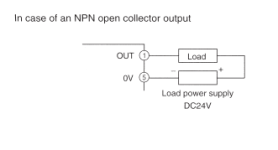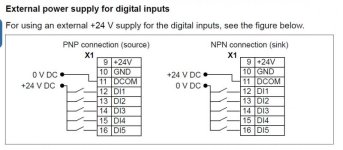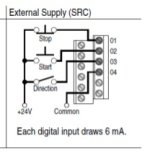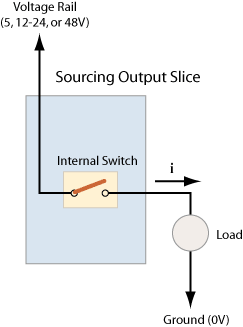CAAJ
Member
Hello All,
I need a bit of help utilizing a timer's DC transistor output to start/stop a motor with a VFD.
The motor currently being utilized has a VFD which can be started and stopped by closing the circuit between an on board 12VDC reference terminal to an on board Digital input start/stop terminal. However to provide control over operation time, I would like to utilize a timer to stop the unit after a set amount of time, thus opening that circuit. I would like to utilize the timer's transistor output to power the digital input on the VFD, however I do not know how to properly utilize the transistor on the timer. The diagram attached seems a bit confusing to me when trying to compare with my application.
If anyone could please lead me in the right direction, it would be greatly appreciated.



Thank you for your time!

I need a bit of help utilizing a timer's DC transistor output to start/stop a motor with a VFD.
The motor currently being utilized has a VFD which can be started and stopped by closing the circuit between an on board 12VDC reference terminal to an on board Digital input start/stop terminal. However to provide control over operation time, I would like to utilize a timer to stop the unit after a set amount of time, thus opening that circuit. I would like to utilize the timer's transistor output to power the digital input on the VFD, however I do not know how to properly utilize the transistor on the timer. The diagram attached seems a bit confusing to me when trying to compare with my application.
If anyone could please lead me in the right direction, it would be greatly appreciated.
Thank you for your time!








